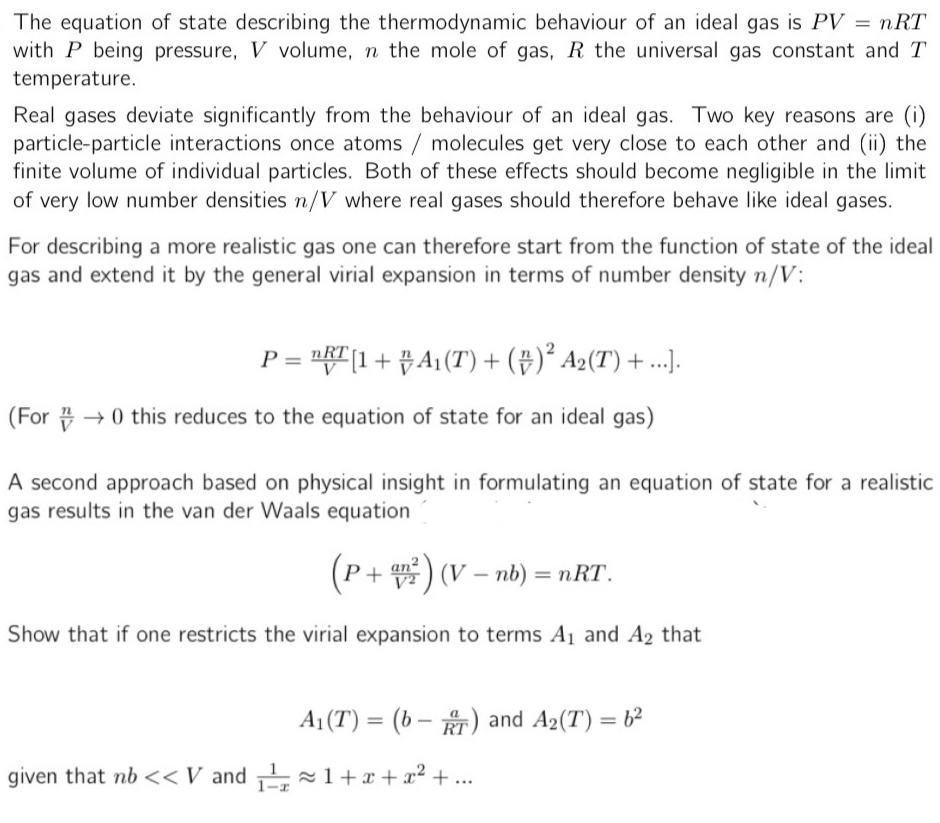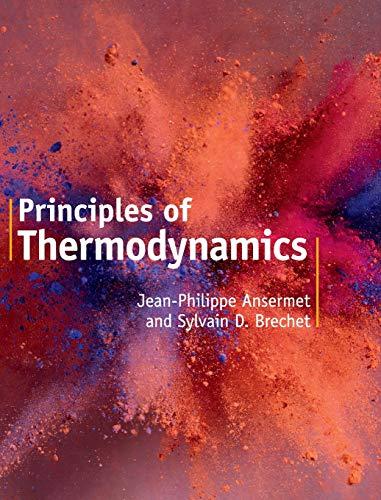Answered step by step
Verified Expert Solution
Question
1 Approved Answer
The equation of state describing the thermodynamic behaviour of an ideal gas is PV = nRT with P being pressure, V volume, n the

The equation of state describing the thermodynamic behaviour of an ideal gas is PV = nRT with P being pressure, V volume, n the mole of gas, R the universal gas constant and T temperature. Real gases deviate significantly from the behaviour of an ideal gas. Two key reasons are (i) particle-particle interactions once atoms molecules get very close to each other and (ii) the finite volume of individual particles. Both of these effects should become negligible in the limit of very low number densities n/V where real gases should therefore behave like ideal gases. For describing a more realistic gas one can therefore start from the function of state of the ideal gas and extend it by the general virial expansion in terms of number density n/V: RT [1 + A(T) + (#) A(T) + ...]. (For 0 this reduces to the equation of state for an ideal gas) A second approach based on physical insight in formulating an equation of state for a realistic gas results in the van der Waals equation (P+ + an) (V - nb) = nRT. Show that if one restricts the virial expansion to terms A1 and A2 that A(T) = (b) and A2(T) = 62 given that nb < < V and 111+x+x + ...
Step by Step Solution
There are 3 Steps involved in it
Step: 1

Get Instant Access to Expert-Tailored Solutions
See step-by-step solutions with expert insights and AI powered tools for academic success
Step: 2

Step: 3

Ace Your Homework with AI
Get the answers you need in no time with our AI-driven, step-by-step assistance
Get Started


